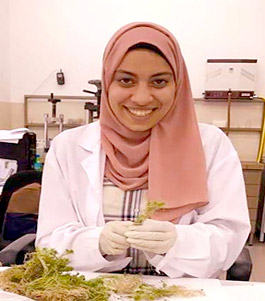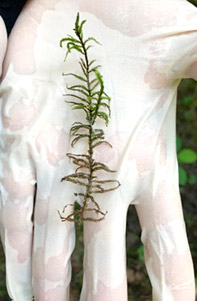
Electronic english version since 2022 |
The newspaper was founded in November 1957
| |
Science to practice
Ficus and eucalyptus helped to assess air quality in Egypt
Scientists of the Laboratory of Neutron Physics JINR developed a methodology for conducting environmental air monitoring based on the neutron activation analysis. According to the results of a recent study, JINR scientists managed not only to obtain data on the air quality in Egypt, but also to make a forecast about its condition in the future and find out what threats it may pose to public health. Scientists used to carry out such monitoring with the help of mosses, and in such a way the air state was assessed in a number of the JINR Member States. However, it turned out that moss is not suitable for research in Egypt due to the hot climate. Scientists found an alternative solution choosing evergreen plants common in the country. Biomonitors were eucalyptus, namely Eucalyptus globulus Labill, and ficus, namely Ficus microcarpa L.f. and Ficus benjamina L.
FLNP JINR specialists have long used mosses as biomonitors in the assessment of heavy metal (HM) deposition and other trace elements. These plants effectively concentrate pollutants from the air and deposits. Moreover, they do not have a root system. Consequently, the contribution of sources other than atmospheric deposition is limited in most cases.
FLNP specialists together with colleagues from Menoufia University initiated the work on air assessment in Egypt. This study continued the joint environmental studies in Egypt, which began with the assessment of the state of the Nile. As usual, the international team placed about 60 bags of moss in the territory of the Greater Cairo, a large agglomeration that unites Cairo, Giza, and Qaliobia, and Menoufia. When it was time to collect moss biomonitors to analyse the content of HM in them, it turned out that due to the dry, hot weather, the plants had completely dried up and were scattered by the wind. Therefore, scientists had to look for an alternative to the plant.



“We decided to use plants common in Egypt, eucalyptus and ficus,” a senior researcher of the Group of Neutron Activation Analysis of FLNP JINR, a participant and one of the initiators of the work Wael Badawy said. ”The group collected their leaves at the height of a person so that the data would be informative when analysing the air and its impact on human health.”
Scientists had to wash leaves in a certain way and pulverised them. Special pills were made from the powder, which were then irradiated in FLNP JINR. In addition to 30 samples of eucalyptus and ficus leaves, scientists collected the same number of soil samples in the places where the plants grow. This was necessary in order to precisely determine the origin of certain elements, because the task of specialists was to determine the accumulation of heavy metals in the leaves from the atmosphere. Scientists compared the elements found in leaves and soils and excluded those found in soil samples from the analysis.
“Eucalyptus and ficus turned out to be really good biomonitors. When analysing, we could even distinguish, where a particular sample was taken, for example from trees along major highways or inside cities,” Wael Badawy said. The neutron activation analysis method showed concentrations of 34 elements in leaf samples and 40 elements in soil samples. “Despite the high population density, heavy traffic, industrial pollution, samples from Cairo showed significantly lower values than the same samples from Menoufia,” the researcher noted. Scientists attribute this result to the lack of proper control over the disposal of waste outside big cities. In addition, the study showed that the sensitivity of F. Benjamina to heavy and trace elements is higher than that of E. globulus. Therefore, ficus plantations may even serve as traps for urban pollution.
To assess the impact of the detected concentrations of TM and other trace elements, scientists carried out a number of calculations using various techniques and compared the results with published worldwide values as well. As a result, based on the identified concentrations, the calculation of the so-called potential environmental risk showed that arsenic and cadmium may pose a threat to the ecology and health of the local population in the future. In addition, scientists made assumptions about which anthropogenic, i.e. caused by human influence, and geogenic, i.e. of natural origin, factors can serve as sources of potentially toxic elements. However, further research is needed to confirm these calculations.
www.jinr.ru